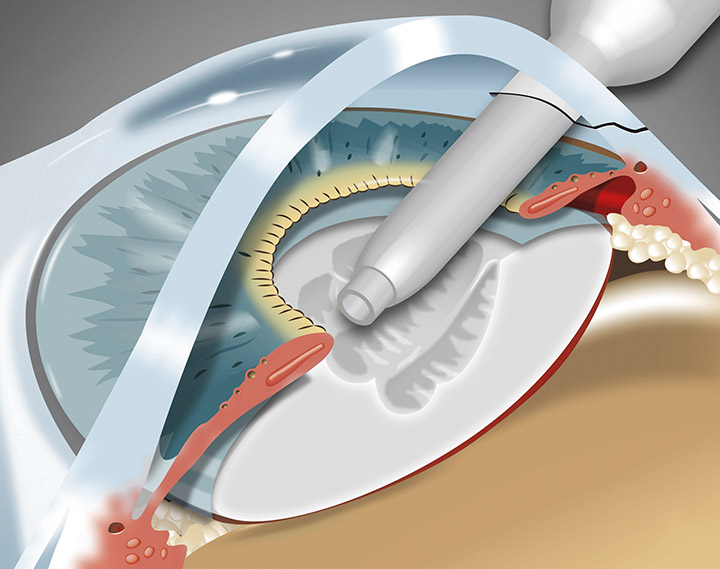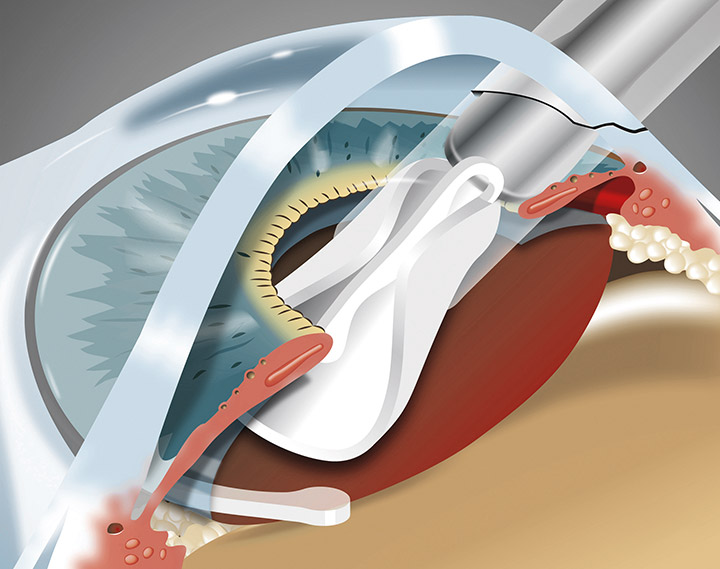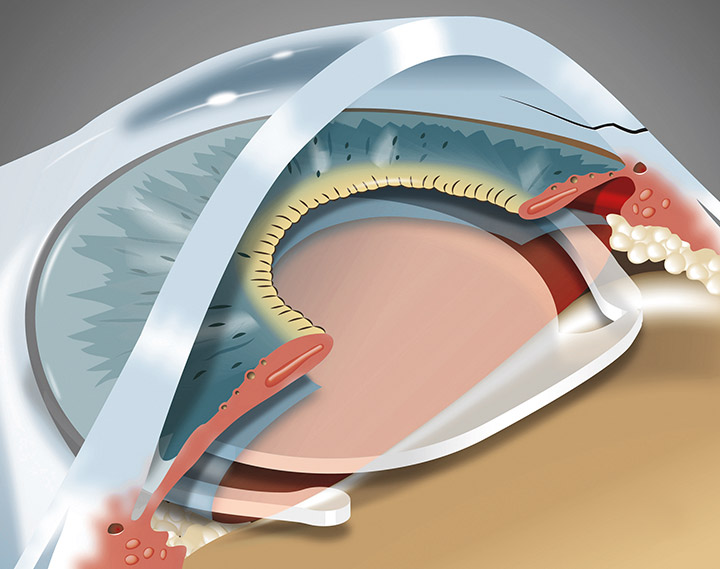The cataract cannot be treated with eye drops, medication or visual aids. The only way to treat cataracts is with surgery (cataract surgery). During this procedure, the body’s own lens is replaced by an artificial lens (intraocular lens, IOL). This lens remains then in the eye forever.
With cataract surgery, other visual impairments caused by glaucoma, diabetes or macular degeneration are of course not eliminated.
Cataract surgery is the most common surgical procedure. In Germany alone, this operation is performed more than 600,000 times a year. Thanks to the great experience of our ophthalmologists and the modern technology that the surgery center at the Herzog Carl Theodor Eye Clinic has, we can perform this operation according to the latest standards. The eye surgeons at the Herzog Carl Theodor Eye Clinic perform this procedure approximately 6,000 times a year.
Most cataract surgeries are performed on an outpatient basis.
In difficult initial situations, in the absence of home care or serious general illnesses, we also carry out the operation in hospital at the Herzog Carl Theodor Eye Clinic.
The procedure lasts only 10-20 minutes without the pre and after care. In total, you and your companions should take about 3 hours. You can relax at home after the surgery and have a checkup on the next day at your referring ophthalmologist or, if we are the treating doctors, come to us in the eye center.
The operation is almost always done under local anesthesia, either under drip anesthesia or through a syringe placed next to the eye. You do not notice the syringe because the anesthetist can make sure that you do not feel it by light sedation.
The operation is therefore always completely painless. There is hardly any pain in the wound even after the operation.



As soon as you have a rest, you can leave the eye clinic and go home with your companion. After the operation, there may occasionally be a slight rubbing or stinging sensation in the eye. However, this is perceived by most patients as not very annoying and disappears after a short time. Just a few days later, the visual acuity has improved significantly and you can continue your normal everyday activities. The maximum eyesight will usually set in within the next few days or weeks.
The YAG capsulotomy or the “post-opening” is performed with the help of the so-called YAG laser (neodymium-doped yttrium aluminum garnet laser). Newly proliferating cells migrate in the capsular bag from the equatorial area into the central visual axis and again lead to a foggy, milky vision. This clouding can be permanently opened by the YAG laser in one session. After local anesthesia, a contact glass is placed on the cornea to better focus the laser beams. This intervention is low-risk and can be carried out on an outpatient basis.
